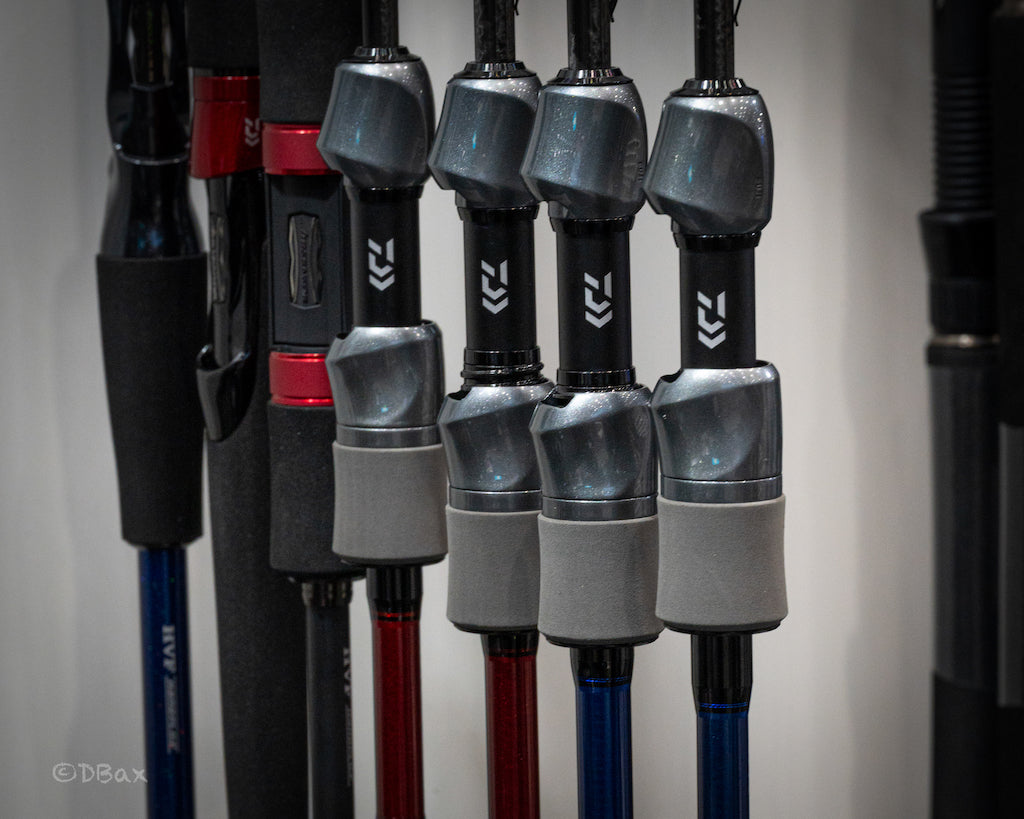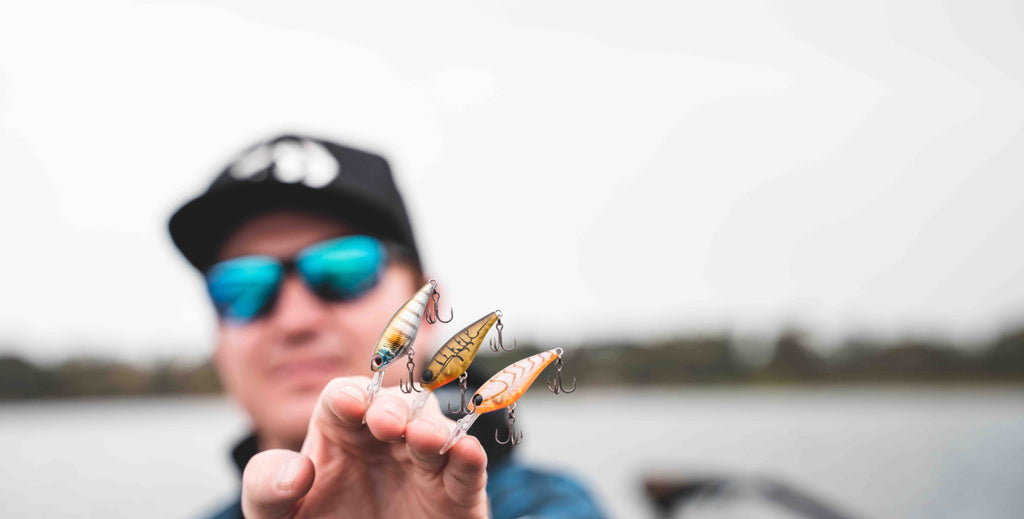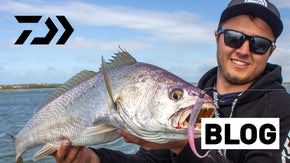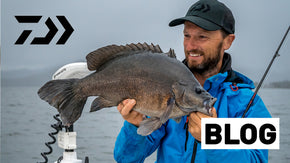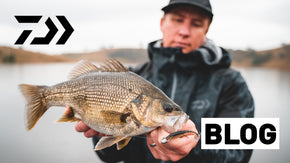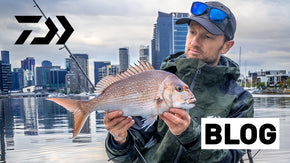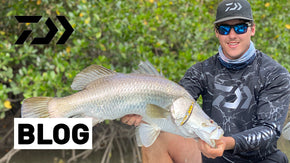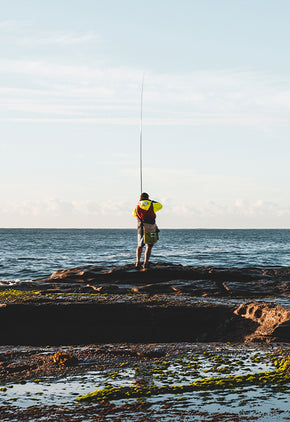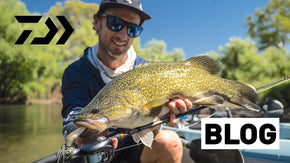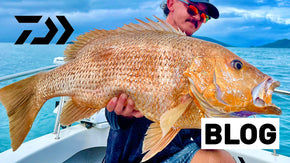Posted 28th July 2023
How to Catch Snapper on Lures: A Beginner’s Guide


By Robert Thornton
There are many fish in Australia with a ‘cult-like’ following amongst lure fishers, however for snapper this following is more like an organised religion.
These hard-hitting predators present anglers with challenges at every juncture, starting from finding them and eliciting a bite, to keeping them connected and coaxing them to the net. They’re also highly regarded as a table fish, and most Aussies who’ve eaten snapper will agree.
It’s for these reasons that snapper have become a very politicised fish in recent years, and though I don’t want to spend too much time on the boring political stuff, it’s an important context for understanding this species.

Snapper in the News
Snapper fisheries exist in every Australian state (including Jervis Bay Territory but excluding NT and ACT), and while the preferred techniques and conservational approaches vary, their economic, ecological and cultural importance is well understood across the country. Snapper fishing puts billions of dollars back into the economy each year, with participation for this species one of the highest in the country. On top of this, snapper are important predators, with their feeding habits sometimes influencing the structure of the environment they live in. For example, in certain areas where numbers of snapper have recovered, kelp forests have increased as a result of snapper reducing populations of kelp-eating sea urchins.
Extensive research has shown that the commercial and recreational sectors have affected their numbers, with some fisheries recording depleted stocks. New regulations in some states have caused controversy, however the good news is that by-and-large, recreational anglers have been doing the right thing and adhering to local regulations.
Government money is being spent to improve these fisheries in a variety of ways, which includes the stocking of more than one million snapper fingerlings into South Australian waters.
Whether these initiatives can help to restore these fisheries to their previous glory is still up for debate, but I am hopeful that with ongoing monitoring and decisive action from governing bodies, we can maintain healthy stocks of snapper for everyone to catch and enjoy.

Snapper Biology
Snapper exist around much of our coastline, with fish recorded at least as far north as Airlie Beach in the east and Broome in the west. Their primary habitat is estuarine and other inshore bays, harbours and sounds, as well as offshore reefs to around 200m in depth.
Snapper breeding occurs at different times throughout their range, with northern populations preferring the cooler months, and southern populations generally spawning through spring and summer. During this time fish will aggregate in areas adjacent to estuaries, as they need precise salinity levels to complete their breeding activities. It’s during these spawning periods that they are susceptible to overfishing and is the reason why regional closed seasons are centred around their breeding seasons.
Spawning aggregations involving masses of big specimens swimming in a spiral formation can be observed every year in Cockburn and Warnbro sounds just south of Perth. This almost always occurs during spring when the local closed season is in effect, with the peak recreational fishing recorded in the months leading up to the closure.
Across their range, the months leading up to spawning are seen as peak times to fish with lures, as the fish are aggressively trying to build condition in preparation.
Where and When to Find Snapper?
Learning how to catch snapper starts with identifying good habitat, and good habitat for any snapper means structure. Structure can be artificial in the form of pylons, rock walls, bridges, beacons, wrecks and so on. Natural structure can include rubble patches, weed beds, coral reefs, drop-offs, pinnacles and… you get the picture. Snapper will hang around any piece of structure where they can find and pick off food, but also use as cover from strong currents and predators. Snapper will happily reside in waters ranging from 3-200m, so local knowledge and sounders (if fishing from a boat) are invaluable when looking for this species. Brisbane-based Nabeel Issa has spent many years chasing them in his home waters of Moreton Bay and adjacent offshore grounds and reckons that although snapper can be found virtually anywhere, avoiding busy areas is a good start.
“They get spooked easily,” he explains, “so areas of heavy traffic, with boats everywhere and people swimming or fishing with big sinkers and stuff are good places to avoid.”
Though they are considered a demersal (bottom-dwelling) fish, snapper are well-known for cruising around large structures and feeding mid-water, especially in lower light conditions when currents slacken off periodically. Unsurprisingly, this is when Nabeel likes to focus most of his efforts.
“I like to fish a high tide about an hour after sunrise,” he says, “with the aim of getting that first cast in right on first light.”

Land-based Snapper on Lures?
Land-based anglers can target snapper on lures, but it’s not without its challenges.“Land-based snapper aren’t easy,” Nabeel explains, “you need ideal conditions to do it.”
Targeting tide changes around low light periods is basically a must, but there are other things to look for as well.
“Cloud cover is very helpful, because it extends low light periods,” he says, “I’ve had mornings with clear weather where once the sun comes up, they just shut down – especially in the shallows in 5 metres or less.”
Another environmental factor that can extend the bite for land-based anglers are rough conditions. Turbulent water from inclement weather can stir up food, but it also provides the snapper with extra cover from predators in shallower water. The Victorian and southern NSW coast fisheries are known for this phenomenon, and provided you can put up with the discomfort, what is usually considered a ‘bad day’ for fishing could be just the right thing for a land-based snapper or two.
Snapper Tackle
Because these fish inhabit a variety of environments and depths, the preferred tackle varies a lot. Learning how to catch snapper on lures will mean tailoring your tackle to suit the area you intend to fish. For simplicity, we will look at inshore snapper (estuaries, bays, harbours, sounds etc) and offshore snapper tackle.
Nabeel targets snapper in both Moreton Bay (including around the Brisbane River mouth) and out offshore, but uses different tackle for both.
“In the bay my favourite outfit is a 3000 Exist with a TD Zero 7’3” 3-6kg rod,” He explains, “I find this is good for the shallow stuff.”
“I like 8lb J-Braid Grand because it’s super strong, and my leader will vary from as light as 10lb and up to 20lb.”
This may sound a bit light for bigger snapper – and it is – but on top of being a stealthier approach, there’s a very practical reason why Nabeel opts for the silly string.
“I’m often using jigheads as light as 1/8oz,” he says, “and with the shallow snapper you want be able to cast well away from the boat to fish that haven’t seen the boat yet – they’re just so spooky!”
If targeting snapper offshore, the game changes a bit. Larger fish that are hanging around in deeper water (20m+), often in stronger currents, demand a different approach.
“If I’m fishing offshore or targeting bigger fish in deeper water, my outfit goes to a 4000 reel and a 4-8kg rod,” Nabeel explains, “So for me that’s a Revelry 4000MQ and Tatula XT 4-8kg rod that’s 7-foot long.”
On this tackle 20lb braid and a 20-30lb leader is necessary to keep these fish away from the reef once hooked, but also light enough to get the jigheads starting from 1/2oz down to where the fish are.
Nabeel uses this tackle mostly for soft plastics, however other luring techniques such as slow-pitch jigging and working soft vibes are also very effective, especially offshore. Daiwa’s DB Solid range of jigging rods are excellent tools for working lures and jigs vertically for snapper in deeper water.

Lures and Tips
Without a doubt, the most heavily used lure type for snapper Australia-wide is soft plastics. There are many reasons for this, but for Nabeel it’s a matter of economics.
“It’s always a lot cheaper with plastics,” he says, “because you do tend to lose a lot of lures to the reef.”
Nabeel uses the BaitJunkie range almost exclusively, with Grubs in 2.5 and 4 inch sizes two of the best snapper baits available. He likes rigs these as light as he can get away with, as snapper will tend to eat soft plastics on the drop, and by extending that fall time the plastic spends more time in the zone. Keeping your jigheads light (1/8-1/6oz) in the shallows also helps you to keep it just off the bottom and out of the reef.
As we mentioned before, fishing vertically in deeper water with soft vibes like the Steez Soft Shell 90, slow-pitch jigs, and other jigs like the Kohga Bayrubber can be very effective. Snapper like movement, so as long as these presentations are fished with plenty of hops and falls, they stand a chance of being crunched by a really big red.
“Sometimes I’ll vary my approach in the shallows if they shut down or people around me are catching fish and they go quiet,” Nabeel says, “So I’ll occasionally try a jerkbait like a Double Clutch, which on some days can work really well.”
Snap to It!
Lure fishing for snapper is an activity that rewards good research, observation and persistence. If you haven’t tried it before, that first fish might not come easily, however every snapper you do catch will help to paint a picture to help you understand your local fishery.
Snapper stocks may not be in the best state Australia-wide, but if we can all listen to the science, adhere to regulations and exercise the self-discipline to take only what we need, future generations will be able to enjoy this fantastic resource as well.
The church of snapper is always accepting new membership, and if you ask me, there’s no better way to spread awareness of this fish’s plight than by encouraging more people to target them with lures.


 Contact Us
Contact Us Blog
Blog About
About
